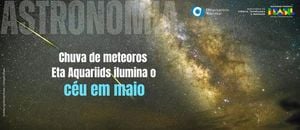Northern Ontarians Resist Nuclear Waste Storage Plans
The search for suitable sites for Canada’s nuclear waste has been long and contentious, drawing the attention of various communities and environmentalists. Now, it appears Canada is inching closer to its decision, but not without facing significant pushback.
On October 28, 2024, residents of South Bruce, Ontario, cast their votes on whether to declare their municipality "a willing host" for the Nuclear Waste Management Organization (NWMO)'s proposed deep geological repository (DGR). The outcome was razor-thin, with 51.8% of the vote favoring the hosting decision, igniting debates on community benefits versus environmental risks.
Naturally, the vote has stirred quite the controversy. The desire to accept nuclear waste stems from potential financial incentives, including job creation and funding for community projects. Yet, residents voiced their concerns. Some feel rushed and inadequately informed about the risks associated with accepting nuclear waste storage right next to their hometowns.
One major site contender, the South Bruce area, is now paired against another proposed site, the Revell Site, situated 43 km from Ignace township and close to Wabigoon Lake Ojibway Nation. While the South Bruce community weighed its options, the First Nations groups near the Revell Site have continuously opposed any such proposal for nuclear waste storage. Their opposition dates back to 2009, emphasizing traditional land use and environmental safety. This strong 'no' resonates throughout several treaties as First Nations assert their right to govern over their lands without external imposition.
The urgency to finalize the repository site couldn’t be more palpable. According to the NWMO, Canada currently has about 3.3 million spent nuclear fuel bundles, with projections of housing 2.3 million more based on the operational life of existing reactors. The organization's long-term objective is to find suitable geological formations to sequester these waste materials securely.
Local opposition has expressed serious concerns about the management of nuclear material, its potential leakage over time, and the historical precedent surrounding nuclear disasters. Indeed, the focus on developing DGRs highlights questions about public safety, environmental integrity, and indigenous rights.
Adding another layer of complexity to the discussion is the January 2024 approval of the Canadian Nuclear Safety Commission (CNSC) for construction of near-surface disposal sites (NSDF) at Chalk River Laboratories, notorious for its ties to historical nuclear incidents, including the first nuclear reactor meltdown on the continent. The NSDF will be situated on the unceded territory of the Algonquin Anishinaabeg peoples—a point of contention as the Kebaowek First Nation engages legal proceedings against the CNSC's decision, demanding recognition of their rights and invitation to negotiations.
At public hearings, Indigenous groups have raised alarms about the transport of nuclear waste through their communities, noting the potential risks involved as high-level radioactive materials move across northern Ontario en route to Chalk River. Activists warn of the insufficient testing and verification surrounding these transportation packages aimed at ensuring safety.
Communication and engagement between NWMO, provincial bodies, and Indigenous Nations appear lacking. Brennain Lloyd of Northwatch argues for more transparency and meaningful involvement from all parties affected by the nuclear waste decisions. ”These decisions should not be relegated to staff levels within the CNSC. They must involve public and Indigenous discussions, ensuring all issues are adequately addressed,” remarked Lloyd during the commission hearings.
This sentiment echoes wider calls for re-evaluations of nuclear strategy by those advocating for “rolling stewardship” as opposed to deep geological burial. This alternative suggests maintaining accessibility to the waste, allowing for monitoring, and potentially reversing the storage decisions made today should they be found harmful.
Canadian Nuclear Laboratories, overseeing the Chalk River Laboratories facility, has historically been pivotal to nuclear advancements. Yet, they are also implicated morally considering their role during the infamous bombings of Hiroshima and Nagasaki. The question remains whether history should inform modern energy initiatives, particularly as the world eyes nuclear energy as possibly being part of the clean energy mix to face climate issues.
The debate circulating around nuclear storage is more than just about environmental conservation; it is about respect for the wishes of Indigenous leaders who have long fought to shield their lands. When former Grand Chief Diane Kelly is quoted as saying, “The Elders had met... and at every occasion, they are clear – there will be no way to authorize the long-term storage of Canada’s nuclear waste,” it emphasizes the depth of feeling among Indigenous leaders against this imposition.
The nuclear waste dilemma is not merely logistical; it involves the cultural, environmental, and social fabric of the communities they aim to serve or sacrifice. While many view nuclear energy as an answer to climate change, others remain skeptical due to its longstanding challenges and complex waste management protocols.
One constant is clear: any plan surrounding nuclear power needs to involve community consent and substantial public discussions. These must respect indigenous rights entirely and fully acknowledge the historical mistakes surrounding nuclear projects. If Canada is to truly champion nuclear power responsibly, these conversations can no longer be sidelined.”



